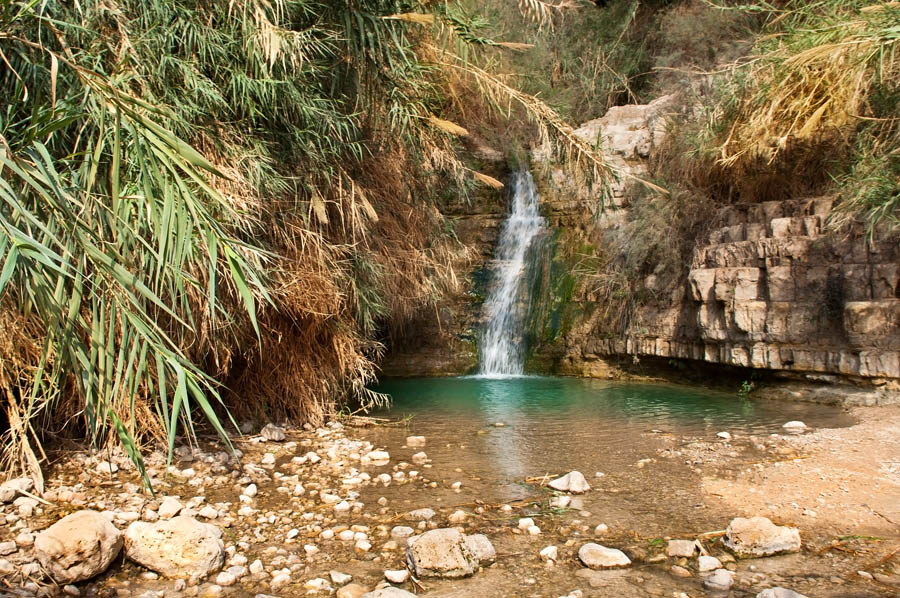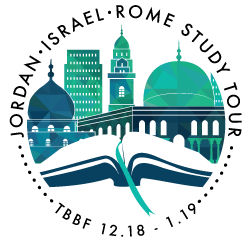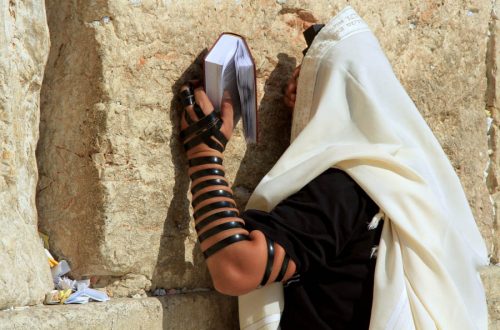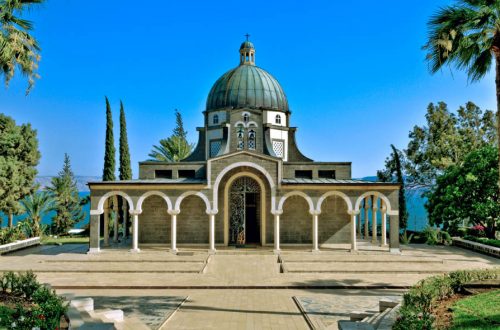Masada

The rocktop fortress of Masada overlooking the Dead Sea has been invested with a quasi-religious significance as a symbol of resistance for the people of Israel. Once a palatial refuge for Herod the Great, this massive plateau on the eastern edge of the Judean Desert is better known as the location of a Roman siege against Jewish rebels in AD 74.
The story of 960 defenders choosing self-inflicted death rather than surrender has achieved legendary status for the Jewish people, though scholars have questioned its credibility. Masada’s symbolic status was boosted by a poem by Yitzchak Lamdan, published in 1927, and by extensive excavations by soldier-archaeologist Yigael Yadin.
Masada’s summit may be reached by a tortuous “snake path” (which takes a fit person 45 minutes), by a path up the Roman siege ramp (15 minutes) or by a modern cable car. The view across the Dead Sea 450 metres below is spectacular. After Jerusalem, Masada is Israel’s most popular tourist attraction.
Herod planned Masada as a palace stronghold and desert foxhole, and fortified it with walls, gates and towers. He wanted a place of refuge in case the Jews should rebel against him, or the Egyptian pharaoh Cleopatra (who coveted Judea) should try to have him killed.
To supply water in this arid setting, a sophisticated system channelled winter rainfall from nearby wadis into huge cisterns quarried low into the northwest of the mountain. Water was then carried by men and beasts of burden up winding paths to reservoirs on the summit. The lower cisterns alone are estimated to have a capacity of 38,000 cubic meters.
In AD 66, at the beginning of the Great Jewish Revolt against Rome, a group of Jewish extremists called Sicarii overran the Roman garrison stationed on Masada. By then, Herod had been dead for 70 years.
According to the historian Josephus, the Sicarii were unlikely heroes who attacked local villages. In a night raid for food on the Jewish settlement of En-Gedi, 17km away, he says the Sicarii killed more than 700 Jewish settlers, including women and children, during Passover.
The Roman governor Lucius Flavius Silva waited until Jerusalem had fallen before taking the Tenth Legion to Masada in 72-73. Laying siegeto the fortress, he established eight fortified camps linked by a ditch and wall around Masada, then built a ramp on top of a natural bedrock spur to reach the summit.
Up the ramp the Romans rolled an iron-sheathed siege tower, with rapid-firing catapults and a huge battering ram to breach the fortress wall. According to Josephus, when defeat was inevitable the leader of the Sicarii, Eleazar ben Ya’ir, gave two impassioned speeches persuading his companions to cast lots to kill each other rather than be taken prisoner.
(from seetheholyland.net)
Ein Gedi

On the shores of the Dead Sea, at the foot of the Judean Hills to the west, and facing the Mountains of Moab to the east, at the lowest spot on earth, nature has created thermo-mineral springs with healing properties found nowhere else. The Ein Gedi hot springs – a rare natural phenomenon existing only in Israel
The name Ein Gedi is composed of two Hebrew words: ein means spring and gedi means goat-kid. En Gedi thus means “Kid spring.” In the 2 Chron 20:2 it is identified with Hazazon-tamar, where the Moabites and Ammonites gathered in order to fight Jehoshaphat. In Genesis 14:7 Hazazon-tamar is mentioned as being an Amorite city, smitten by Chedorlaomer in his war against the cities of the plain.
In Joshua 15:62, Ein Gedi is enumerated among the cities of the Tribe of Judah in the desert Betharaba, but Ezekiel 47:10 shows that it was also a fisherman’s town. Later, King David hides in the desert of Ein Gedi and King Saul seeks him “even upon the most craggy rocks, which are accessible only to wild goats”.
(from seetheholyland.net)
Qumran
This little known community in the Judean desert became world famous when a shepherd boy herding goats happened upon its vast storehouse of ancient texts.
Constructed 134-104BC, this settlement was inhabited until being destroyed by the Romans in 68 ad. It is most famous for the Dead Sea Scrolls that were first found in one of the many caves that surround the site.
Our best sense of the inhabitants of Qumran is that they were a group of people very much dedicated to a strict lifestyle, and the belief in a coming Messiah. They were very diligent in the copying and preserving of ancient texts, especially the Old Testament. Archaeologists have discovered a large Scriptorium, or writing room, complete with rows of desks, where scribes and students spent hours copying the ancient texts.
They shared the common outlook of the Old Testament in worshipping the God of their Fathers, and looking forward to the coming of Messiah. The considered themselves God’s Elect, and withdrew to the desert to “prepare the way of the Lord.” According to their own writings, they say themselves as those with whom God had made a “New Covenant” (See: Jeremiah 31:31-34). Central to their faith was a passionate believe that the “last days” were at hand, when God would descend with his angels to wipe out all evil, sin, and opposition, and establish his Kingdom.
The Dead Sea Scrolls: Eleven caves clustered around the ruins of the ancient Qumran community have yielded manuscripts or fragments. Cave I was discovered in 1947 and the latest discovery, Cave XI, was found in 1956. Of the caves, Caves i and XI have produced relatively intact manuscripts, while Cave IV held the largest cache of manuscripts: tens of thousands of fragments belonging to more than 380 manuscripts.
The manuscripts range from small pieces of pottery and parchment, to large vellum scrolls, and even a massive copper scroll 27 feet long. Evidence found in each cave demonstrated that the archaeologists were not the first to examine their contents. In every case, many manuscripts were damaged or missing. In several instances, scholars would arrive at a cave only to find local shepherds warming themselves over the flames from burning parchment. But, the manuscripts which remain are enormously significant both for biblical studies, and as historical reminders of live in the Judean wilderness before and during the time of Christ.
The Dead Sea Scrolls are a collection of 972 texts from the Hebrew Bible The texts are of great mystical and historical significance, as they include the oldest known surviving copies and extra-biblical documents and preserve evidence of great diversity in late Second Temple Judaism. They are written in Hebrew, Aramaic and Greek, mostly on parchment, but with some written on papyrus. These manuscripts generally date between 150 BC and 70 AD.
While the discovery of the Scrolls has been beneficial to many areas of study, of primary interest to Christians has been their impact on supporting the historical authenticity of the Bible.
The significance of the scrolls relates in a large part to the field of textual criticism and how accurately the Bible has been transcribed over time. Before the discovery of the Dead Sea Scrolls, the oldest Hebrew manuscripts of the Bible were Masoretic texts dating to 10th century CE such as the Aleppo Codex. The biblical manuscripts found among the Dead Sea Scrolls push that date back a millennium to the 2nd century BCE. Before this discovery, the earliest extant manuscripts of the Old Testament were in Greek in manuscripts such as Codex Vaticanus Graecus (1209) and Codex Sinaiticus.
According to The Oxford Companion to Archaeology: “The biblical manuscripts from Qumran, which include at least fragments from every book of the Old Testament, except perhaps for the Book of Esther, provide a far older cross section of scriptural tradition than that available to scholars before.”
Jericho

Jericho is a city located near the Jordan River in the West Bank of the Palestinian Territories. It is the capital of the Jericho Governorate, and has a population of over 20,000. Situated well below sea level on an east-west route 10 miles north of the Dead Sea, Jericho is the lowest permanently inhabited site on earth. It is also believed to be one of the oldest continuously inhabited cities of the world. Described in the Hebrew Bible as the “City of Palm Trees”, copious springs in and around Jericho have made it an attractive site for human habitation for thousands of years.
The Israelites witnessed God bring down its walls with their great shout and trumpet blasts. Here Jesus healed Bartimaeus, the blind beggar, and dined with Zacchaeus, the rich tax collector. And both Cleopatra and Herod the Great coveted this lush oasis.
Jericho (the name means “City of palms”) is mentioned 70 times in the Old Testament. In perhaps the most famous battle in the Bible, it was the first town captured by the Israelites when they entered the Promised Land.
Since Jericho was on the normal route from Galilee to Jerusalem, Jesus passed through it several times. Near the centre of the city, a centuries-old sycamore tree recalls the incident in which the tax collector Zacchaeus, too short to see over the crowd, climbed a sycamore’s branches in order to see Jesus.
Jesus chose the steep, rocky road from Jerusalem down to Jericho as the setting for the parable of the Good Samaritan. In this parable, Jesus describes the compassion of an alien (the Samaritan) towards a man who had been beaten and robbed, contrasting it with the pitiless attitude of a priest and a Levite who had “passed by on the other side” of the road. At that time, Jericho was one of the cities designated for the residence of priests and Levites rostered for duty in the Temple, about 28 km away. About 12,000 priests and Levites are believed to have lived there, and they were a familiar sight on the road.
Cleopatra wanted a perfume In 35 BC the Roman politician Mark Antony made a gift of Jericho to his lover Cleopatra of Egypt. Cleopatra had coveted the oasis because she wanted to control the plantations of persimmon (now extinct), which produced a perfume that reputedly “drove men wild”. Later Cleopatra leased Jericho to Herod the Great at an exorbitant fee that cost him almost half Judea’s income.
After Mark Antony and Cleopatra died, Herod gained ownership of the city. He built a palatial residence and died there in 4 BC.
(from seetheholyland.net)
Wadi Qelt
This is a wadi or valley within the Jordan Valley one mile south of Jericho, and near the Dead Sea in the West Bank, part of the Palestinian territories. It is said to be the winter home of King Herod. This is the general area in which Christ retreated to fast and pray for 40 days. It is also the location of His three tempations by Satan. This is often refererred to the Valley of the Shadow of Death as spoken of in Psalm 23.
Related Biblical References:
- 2 Chron 20:1-4 – Moabites and Ammonites gathered for war
- 1 Sam 24:1-22 – David hiding from Saul in Engedi
- Jeremiah 31:31-34 – Prophecy concerning the New Covenant
- Joshua 6:1-21 – Joshua captures Jericho
- 2 Kings 2:15-22 – Elisha purifies the spring
- Luke 19:1-10 – Zacchaeus meets Jesus
- Mark 10:46-52 – Jesus heals Bartimaeus
- Luke 10:25-37 – The Good Samaritan
- Psalm 23 – The Valley of the Shadow of Death
- Luke 4:1-13 – Jesus tempted by Satan in the wilderness






